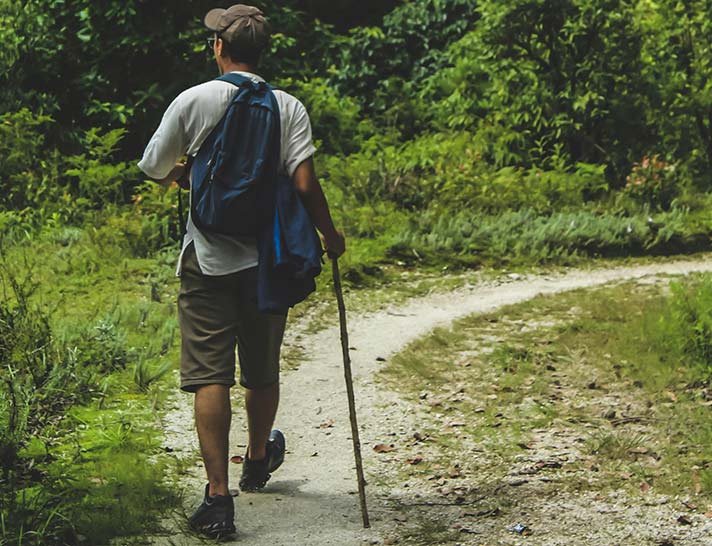Trail Talk – May 2024
WARM SUNNY DAYS followed by cool cloudy ones. Dusty trails one day and sloppy mud the next. Springtime is fully embracing our local woodlands. Just a blink of an eye from the impassable tangles of the late winter snowstorm, through the brilliant hillside displays of floral brilliance, and now into the time of year when we walk through tunnels of white: ocean spray, nine bark, mock orange, and dogwood. It’s a year-round thing we do, being out there, making tracks.
Bird calls greet the early morning hikers and frog songs resonate along the creek bottoms and in the wet areas. The lucky early riser might catch a glimpse of the Great Gray Owl, returning to the dark woods for a daytime snooze. As warmth spreads across the hillsides, our resident lizards and snakes come forth from so many hidey holes to bask in morning’s brilliance.
This, Dear Reader, is Spring in Southern Oregon.
It’s good that we can be out and about so easily, attuned to the changing nature of our wild areas, as we cycle through another calendar year. It’s good that we have such easily accessed hiking trails on which to dirty the soles of our shoes. And it’s good that we never take these opportunities for granted, knowing full well that the hustle and bustle of our modern age too often usurps our meditative nature.
Looking to our natural areas for evidence of our changing world has been the delight (and at times, the burden) of those who spend time there. At times, the changes are rapid, as experienced in our recent wildfires and fuels reduction projects. Other times, more subtle. Ask yourself, “When do I consider a tree to be old?”
We look to protected areas for old-growth commercial trees but what about our ubiquitous madrones? The “Octopus Tree’” near the Jane Naversen Trail on Britt Ridge was “old” when we were children. The madrone along Ponderosa Snag Trail has one of the largest trunks of any tree in our area. For hikers braving Madrone Grove Trail in Forest Park, a quiet sojourn on El Patron Madrone bench yields a view of multiple trees spared from the loggers’ saws. Other trails take visitors through stands of brilliant orange-trunked younger trees, a testament to the regenerative nature of these forests.
As always, as you enjoy these areas, respect the integrity of the trails. Jacksonville has been blessed with a dedicated crew of volunteers to maintain the infrastructure of our parks and woodlands. Astute hikers will notice improved grades and tread work, additional turns in steep, easily eroded areas, and continuing maintenance to keep vegetation, particularly poison oak, pruned back from trail corridors. When you come across these folks (they’re not really as cranky as they seem), thank them.
The heat of summer will soon impact our woodlands, so it is our hope that all of you can get out there soon, going there, making tracks.
We don’t stop hiking because we turn old.
We turn old because we stop hiking.
(unknown author)

 Trail Talk is a monthly column by Clayton Gillette about hiking the Jacksonville Woodlands trail system. For more information, please visit the Jacksonville Woodlands Association website at
Trail Talk is a monthly column by Clayton Gillette about hiking the Jacksonville Woodlands trail system. For more information, please visit the Jacksonville Woodlands Association website at